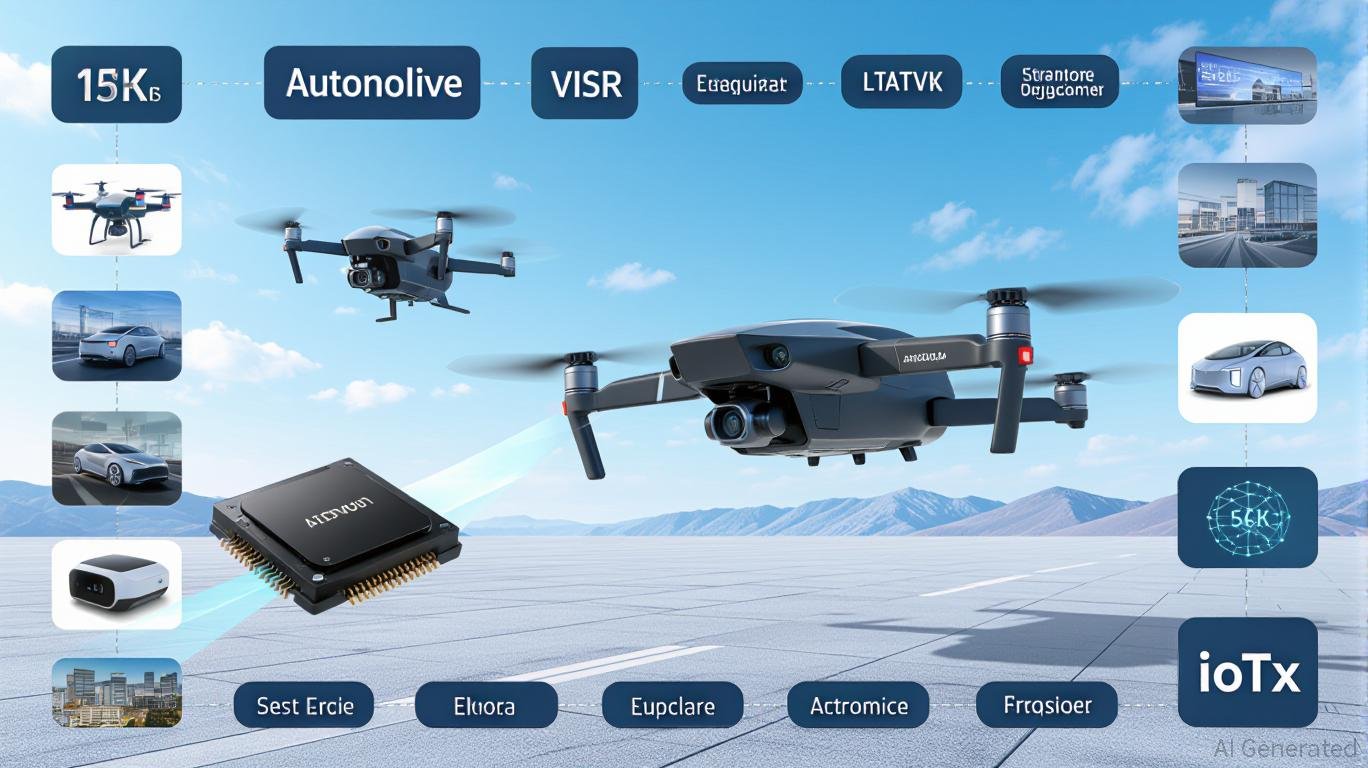Tools & Platforms
AI Clones Are No Longer Science Fiction — They’re Real

Opinions expressed by Entrepreneur contributors are their own.
In a quiet conference room, a startup founder’s digital doppelgänger delivers a pitch to investors, answering questions with the founder’s voice and expertise, even as the real founder is elsewhere.
This scenario is no longer science fiction. A wave of AI personas, “digital twins” and self-replicating agents is emerging, allowing individuals to outsource aspects of themselves to AI. From celebrity coaches to tech icons, these AI-powered avatars promise to scale human presence and productivity in unprecedented ways. Yet they also raise profound questions about identity, authenticity and the very nature of work in a post-human era.
The rise of personal AI personas and digital twins
The concept of a “digital twin” originated in industry, a virtual replica of a physical system for simulation and optimization. Now, it’s being reimagined on a personal level. AI digital twins are dynamic, evolving AI models that replicate a person’s knowledge and grow it over time. Instead of static data, these twins use custom AI models to mirror an individual’s unique perspectives, expertise and even communication style. The goal is a “living, breathing representation” of one’s thought processes.
Crucially, personal AI personas aren’t just parroting facts. They aim to capture how you think and speak. A true digital twin can replicate an individual’s unique perspectives, experiences and knowledge base, assisting with recall, generating insights and even communicating in your own voice.
Related: Digital Twins Are the Future — Here Are 5 Ways to Keep Them Secure While Manufacturing Innovation
Tools enabling “self-replication”
A growing ecosystem of platforms and tools is making AI self-cloning accessible:
- Personal.ai: Offers a personal language model trained on your content, effectively becoming your memory and voice in digital form. It emphasises privacy and user control, positioning the AI twin as a secure asset that continuously learns and updates with you.
- Lindy: A no-code AI agent builder that acts like a personal or business assistant. Lindy allows users to create custom AI “assistants” that integrate with email, calendars, CRM and more.
- OpenAI’s Custom GPTs: OpenAI’s ChatGPT now lets users build custom GPTs, essentially personal chatbots turned to a specific persona or knowledge base. With a ChatGPT Plus account, you can create a bespoke AI and share it in a GOT marketplace.
- ElevenLabs and Synthesia: Provide ultra-realistic voice and video cloning, enabling AI personas to speak and appear as their human counterparts. Reid Hoffman used these tools to create a deepfake avatar of himself for an AI interview experiment.
Early adopters: From gurus to CEOs
This once-futuristic concept is now a reality embraces by high-profile leaders:
- Tony Robbins launched “Tony’s AI Twin,” an interactive coach built by Steno.ai using ElevanLabs voice cloning. It delivers advice drawn from his decades of work is accessible 24/7.
- Deepak Chopra unveiled DigitalDeepak.ai, an AI trained on his teachings to offer guidance on spirituality and well-being.
- Reid Hoffman created “Reid AI,” a custom GPT trained on 20 years of this thinking, and used a digital avatar to appear in interviews and explore the ethical limits of this tech.
- Fan-made projects like “Ask Naval” offer an AI version of Naval Ravikant, trained unofficially on his tweets, interviews and writings.
The allure: Outsourcing and scaling the self
Why are leaders drawn to AI personas? The allure is clear. AI twins offer the promise of infinite reach, an ability to engage thousands simultaneously, attend multiple meetings or provide mentorship across time zones. They create an entirely new monetization model, where personal knowledge and brand become a scalable product. Robbins’ team, for instance, notes that his AI twin has opened a new revenue stream with no additional time investment. Productivity gains are significant, as digital twins take over routine tasks, freeing founders to focus on creative or high-value work. Additionally, trained AI twins can serve as cognitive memory tools, surfacing forgotten insights, maintaining brand consistency and supporting rapid decision-making.
Zoom CEO Eric Yuan has even suggested that AI digital twins could eventually be so effective that they reduce the workweek to three days. For visionary leaders, AI personas are not just tools; they’re multipliers of influence, knowledge and time.
Risks and ethical questions
As a lawyer, I always ask: What are the risks, and what are the ethics behind the product? This frontier is not without peril:
- Authenticity: Audiences may struggle to trust whether communication comes from the person or their AI. Transparency and fidelity are key.
- Misinformation: AI personas must be tightly governed to avoid reputational or legal risk.
- Privacy: Ownership of one’s digital likeness is a complex, emerging legal issue.
- Human skill erosion: Over-reliance on AI might dull the very cognitive and interpersonal skills that define great leaders.
Related: Why Every Entrepreneur Must Prioritize Ethical AI — Now
The post-human edge
Founders are no longer just building products; they’re becoming platforms. The real edge lies in knowing what to scale and what to keep human. An AI persona might extend your influence, but it’s your irreplaceable presence, empathy and judgment that remain your ultimate value.
In a world where anyone can clone their voice and replicate their insights, the differentiator is not your scalability, but your discernment. The future belongs to those who know when to outsource — and when to show up.
Founders and businesses are entering a post-human business era. Let’s build it wisely.
In a quiet conference room, a startup founder’s digital doppelgänger delivers a pitch to investors, answering questions with the founder’s voice and expertise, even as the real founder is elsewhere.
This scenario is no longer science fiction. A wave of AI personas, “digital twins” and self-replicating agents is emerging, allowing individuals to outsource aspects of themselves to AI. From celebrity coaches to tech icons, these AI-powered avatars promise to scale human presence and productivity in unprecedented ways. Yet they also raise profound questions about identity, authenticity and the very nature of work in a post-human era.
The rise of personal AI personas and digital twins
The rest of this article is locked.
Join Entrepreneur+ today for access.
Tools & Platforms
iShares Future AI & Tech ETF (NYSEARCA:ARTY) Surges 27.6% in 2025 — Is It a Buy?

ARTY delivers strong tech exposure with 83% allocation to AI leaders, but volatility and valuations test investor conviction | That’s TradingNEWS
8/30/2025 8:54:36 PM
Tools & Platforms
Emperor Musk’s AI Clothes – Will Lockett’s Newsletter

Musk has been parading around in his AI clothes for a while now. With the amount he screams and shouts about AI, you’d think he invented it. Of course, like everything else Musk peddles, he had nothing to do with its invention or development, except for underpaying and overworking his engineers and being an awful, overpromising PR man. However, people aren’t just noticing that Musk’s clothes are non-existent — they are also starting to point and laugh at his skid marks and the “I Love the Nazi Man” tattoo down his back. Why? Because he just can’t seem to get his AI up and working. And there is no little blue pill to remedy this situation.
Take, for example, Tesla’s hilariously crap Robotaxi rollout. The media at large is only just cottoning on to it being a huge PR stunt.
I have gone on ad nauseam about why Tesla’s self-driving cars are completely inadequate, so if you want to know the details, read my previous article here. But the helicopter view is that, unlike other autonomous vehicles, Tesla’s system has zero redundancy or safety nets and requires a nearly 100% accurate AI — which categorically can’t exist — to be even remotely safe.
Tesla is painfully aware of this fatal flaw, with Tesla engineers whistleblowing their concerns about it to the media (read more here) and the DOJ opening an investigation (read more here). So I, along with countless other commentators, was pretty damn relieved to find out that Tesla’s Robotaxis had safety drivers. There was even mention of remote workers being able to take control of the car and drive it safely in the case of a critical disengagement.
But this kind of system isn’t impressive enough for Musk. Any Uber or Lyft driver with a Tesla who wastes their money on FSD can do the exact same thing. There is no social or investor kudos to be gained for Tesla or Musk here. And here is a hint: Musk doesn’t make money from Tesla sales. After all, his $50 billion pay packet (which is now less, thanks to Musk tanking Tesla’s valuation) was the equivalent of him getting $10,000 for every Tesla ever sold! Tesla makes substantially less profit from every car sold than that.
So, what do you do if you have bet your entire company’s valuation on autonomous technology that you simply can’t deliver on?
Fudge it.
Tesla put the safety driver in the passenger seat! Because, look, it’s a self-driving car — there is no one in the driver’s seat!
This is a dangerous move that offers no benefit other than optics.
Rather than being able to properly take over the car and drive it to safety, the only thing these safety drivers could do was press a button to bring the vehicle to a stop. Which, as anyone with a driving licence will tell you, is not always the safest option! Particularly when you consider that Robotaxis have been spotted driving into lanes of oncoming traffic.
Yet, this bafflingly shite decision wasn’t really reported on. Or at least it wasn’t until a video surfaced a few days ago that showed FSD failing and a safety driver being forced to exit the vehicle in the middle of traffic to take the driver’s seat and regain control. (watch it here).
This shows just how wildly dangerous Tesla’s Robotaxis are.
The safety driver had to take a serious risk to take control of the car. Not only that, but this incident suggests there are no remote operatives capable of taking over when things go wrong. That has been a core safety feature of all developing self-driving ride-hailing services, such as Waymo and Cruise, since day one and is routinely used to keep passengers safe. The fact that this is absent for Robotaxis, which Tesla already know have a far, far higher critical disengagement rate than any other self-driving ride-hailing service, could easily be seen as insanely negligent.
Musk is comfortable putting other people — not just the safety driver, but paying passengers and the public — in danger, all for a crappy PR stunt to cover up how bad his self-driving system actually is. And the media at large, as well as public consensus, are beginning to catch up to this horrifying fact.
However, Musk’s AI woes go far, far deeper than that.
Tools & Platforms
Ambarella’s Accelerating Edge AI Growth and Its Implications for Semiconductor Investors

Ambarella, Inc. (NASDAQ: AMBA) has emerged as a standout performer in the edge AI semiconductor sector, driven by a combination of technological innovation, strategic market positioning, and robust financial growth. In Q2 2026, the company reported revenue of $95.5 million, a 49.9% year-over-year increase, with non-GAAP net profit turning positive at $6.4 million compared to a $5.5 million loss in the prior year [1]. This surge reflects Ambarella’s dominance in edge AI applications such as portable video devices, robotic aerial drones, and automotive systems, where its CVflow architecture delivers unmatched power efficiency and real-time analytics [2].
Strategic Momentum: Niche Specialization and Scalable Applications
Ambarella’s competitive edge lies in its focus on low-power, high-performance system-on-chip (SoC) solutions tailored for edge computing. Unlike NVIDIA’s Jetson Orin (275 TOPS) or Qualcomm’s Snapdragon 8 Elite, which prioritize raw computational power for robotics and mobile AI, Ambarella’s CV5 and N1655 SoCs excel in video-centric edge devices. For instance, its 5nm AI SoCs enable 8K video processing in security cameras and anti-gravity drones like Insta360’s A1, while its Oculii 4D imaging radar is deployed in Lotus’s L2+ autonomous vehicles [3]. This specialization has allowed Ambarella to capture a majority share in the mid- and high-end security camera market outside China and expand into automotive and industrial IoT segments [4].
The company’s Hybrid AI (HAI) architecture further amplifies its scalability. By combining on-device AI inference with cloud connectivity, Ambarella’s SoCs support GenAI models ranging from 0.5 to 34 billion parameters, enabling applications from smart home devices to autonomous systems [5]. HAI revenue is projected to account for 80% of total sales in FY2026, underscoring its role as a growth engine [6].
Market Positioning: Capitalizing on Edge AI’s Explosive Growth
The edge AI semiconductor market is expanding rapidly, with a projected CAGR of 17.6% through 2030, reaching $58.9 billion by 2030 [7]. Ambarella’s strategic partnerships and design wins position it to benefit from this growth. For example, its collaboration with Gauzy on ADAS solutions has led to deployments in Ford Trucks, while its driver monitoring system with LG was showcased at CES 2025 [8]. These partnerships highlight Ambarella’s ability to integrate edge AI into safety-critical applications, a trend accelerating with the rise of autonomous vehicles and smart infrastructure.
Risks and Challenges: Profitability and Competitive Pressures
Despite its momentum, Ambarella faces challenges. Its EBIT margin remains negative at -33%, and the company relies on a single logistics provider, exposing it to supply chain risks [9]. Additionally, while it leads in niche markets, broader competitors like NVIDIA and Qualcomm are expanding into edge AI, leveraging their ecosystem advantages. For instance, NVIDIA’s Blackwell architecture targets enterprise AI workloads, while Qualcomm’s Cloud AI 100 Pro competes in mobile and automotive AI [10]. Ambarella must also contend with rising competition from Chinese firms developing localized alternatives, which could erode its market share in the long term.
Conclusion: A High-Growth Play with Caution
Ambarella’s accelerating edge AI growth and strategic focus on high-ASP applications make it an attractive investment for semiconductor investors. Its ability to innovate in video-centric edge devices, coupled with a strong balance sheet ($259 million in cash) and disciplined cost management, positions it to capitalize on the $58.9 billion edge AI market [11]. However, investors should monitor its path to profitability and the risks posed by supply chain constraints and competitive pressures. Notably, historical data from earnings release events since 2022 suggests a tendency for underperformance in the post-announcement period, with average cumulative returns declining by approximately -3% over 30 days [12].
Source:
[1] Ambarella, Inc. Announces Second Quarter Fiscal Year 2026 Financial Results [https://ambarella.gcs-web.com/news-releases/news-release-details/ambarella-inc-announces-second-quarter-fiscal-year-2026]
[2] Ambarella, Inc. (AMBA) – in seconds. [https://www.tenzingmemo.com/companies/amba_ambarella-inc]
[3] Ambarella’s Strategic Position in the HAI and Edge AI Markets: A High-Growth Play for 2026 and Beyond [https://www.ainvest.com/news/ambarella-strategic-position-hai-edge-ai-markets-high-growth-play-2026-2508/]
[4] Top 20 AI Chip Makers: NVIDIA & Its Competitors [https://research.aimultiple.com/ai-chip-makers/]
[5] Ambarella (AMBA) Q2 2026 Earnings Call Transcript [https://www.fool.com/earnings/call-transcripts/2025/08/28/ambarella-amba-q2-2026-earnings-call-transcript/]
[6] Ambarella’s Edge AI Growth Strategy: Balancing IoT Momentum and Automotive Potential for Long-Term Margin Expansion [https://www.ainvest.com/news/ambarella-edge-ai-growth-strategy-balancing-iot-momentum-automotive-potential-long-term-margin-expansion-2508/]
[7] Edge AI Hardware Market Size, Share & Trends [https://www.marketsandmarkets.com/Market-Reports/edge-ai-hardware-market-158498281.html]
[8] Gauzy, Ambarella Partner to Advance ADAS with Edge AI [https://www.engineering.com/gauzy-ambarella-partner-to-advance-adas-with-edge-ai/]
[9] Ambarella Stock Soars Amid Market Volatility and Positive Technological Advancements [https://stockstotrade.com/news/ambarellainc-amba-news-2025_08_30/]
[10] What are the top edge AI chips of 2025? [https://www.engineersgarage.com/what-are-the-top-edge-ai-chips-of-2025/]
[11] AI Chip Statistics 2025: Funding, Startups & Industry Giants [https://sqmagazine.co.uk/ai-chip-statistics/]
[12] Backtest results for AMBA earnings release impact (2022–2025).
“””
-
Tools & Platforms3 weeks ago
Building Trust in Military AI Starts with Opening the Black Box – War on the Rocks
-

 Ethics & Policy1 month ago
Ethics & Policy1 month agoSDAIA Supports Saudi Arabia’s Leadership in Shaping Global AI Ethics, Policy, and Research – وكالة الأنباء السعودية
-

 Events & Conferences3 months ago
Events & Conferences3 months agoJourney to 1000 models: Scaling Instagram’s recommendation system
-

 Jobs & Careers2 months ago
Jobs & Careers2 months agoMumbai-based Perplexity Alternative Has 60k+ Users Without Funding
-

 Funding & Business2 months ago
Funding & Business2 months agoKayak and Expedia race to build AI travel agents that turn social posts into itineraries
-

 Education2 months ago
Education2 months agoVEX Robotics launches AI-powered classroom robotics system
-

 Business1 day ago
Business1 day agoThe Guardian view on Trump and the Fed: independence is no substitute for accountability | Editorial
-

 Podcasts & Talks2 months ago
Podcasts & Talks2 months agoHappy 4th of July! 🎆 Made with Veo 3 in Gemini
-

 Podcasts & Talks2 months ago
Podcasts & Talks2 months agoOpenAI 🤝 @teamganassi
-

 Jobs & Careers2 months ago
Jobs & Careers2 months agoAstrophel Aerospace Raises ₹6.84 Crore to Build Reusable Launch Vehicle





















